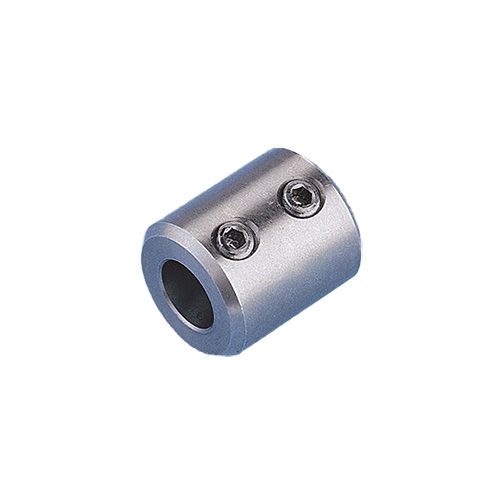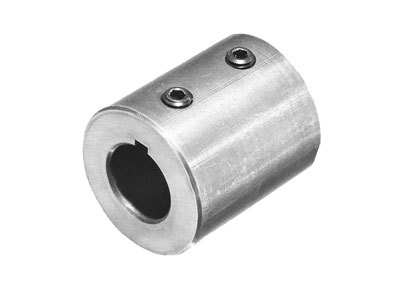Product Description
ISO DIN ANSI ASA Standard Nm50-214 Nm Cast Iron Flexible Sleeve Normex Plum CHINAMFG Type Elastic Shaft Coupling
NM flexible shaft coupling is a cylindrical pin made of some non-metallic materials, which is placed between the 2 sides of the coupling and the inner surface of the outer ring, and a device to transfer the torque through the column pin to realize the connection between 2 half couplings. NM flexible shaft coupling between the slider made of bakelite cloth or polyurethane, suitable for high speed, large torque, no sharp impact of the 2 connections.
Product brand: EVER-POWER
Name of transmission part: water pump coupling
Product structure: it is composed of 2 cast iron claws and a natural rubber inner ring
Suitable shaft diameter: 7mm-75mm
Suitable motor power: within 60hp / 45KW
Product features:
1. The maximum torque is 125kgm 2. Stable operation and low noise 3. The product is made of cast iron and cast by precision die casting, so it is not easy to cause fracture during operation
Related products:
Production workshop:
Company information:
/* January 22, 2571 19:08:37 */!function(){function s(e,r){var a,o={};try{e&&e.split(“,”).forEach(function(e,t){e&&(a=e.match(/(.*?):(.*)$/))&&1

Can Sleeve Couplings Accommodate Axial and Angular Misalignments Simultaneously?
Yes, sleeve couplings are designed to accommodate both axial and angular misalignments simultaneously. They offer a certain degree of flexibility, allowing them to compensate for minor misalignments between the shafts they connect. Here’s how sleeve couplings handle axial and angular misalignments:
1. Axial Misalignment:
Axial misalignment refers to the misalignment that occurs along the axis of the connected shafts. In other words, one shaft is slightly offset from the other along their common centerline. Sleeve couplings can tolerate a small amount of axial misalignment because of their flexible nature.
When axial misalignment occurs, the sleeve coupling can flex along its length, allowing the shafts to remain connected despite the slight offset. The coupling’s flexibility prevents excessive stress on the connected machinery and helps maintain a smooth torque transmission.
2. Angular Misalignment:
Angular misalignment, on the other hand, occurs when the two shafts are not perfectly aligned in the same plane. Instead, they form an angle with each other. Sleeve couplings can also accommodate a certain amount of angular misalignment.
When angular misalignment is present, the sleeve coupling can bend and twist slightly to compensate for the angle between the shafts. This ability to flex and twist ensures that the coupling can transmit torque efficiently and reduces the risk of premature wear or damage to the system.
Simultaneous Axial and Angular Misalignment:
Sleeve couplings are well-suited to handle both axial and angular misalignments simultaneously. When a system experiences both types of misalignments, the sleeve coupling’s flexibility allows it to adjust and compensate for both the axial offset and angular deviation between the shafts.
It is important to note that while sleeve couplings can handle some misalignments, excessive misalignments should be avoided to prevent excessive wear and premature failure of the coupling. Regular inspections and maintenance can help ensure that the coupling operates within its designed misalignment limits and maintains optimal performance in the motion control system.
In summary, sleeve couplings can simultaneously accommodate both axial and angular misalignments to a certain extent due to their flexible and forgiving design. However, it is essential to ensure that the system is well-aligned and that the coupling is regularly inspected to ensure it functions correctly and provides reliable power transmission in various industrial applications.

Can Sleeve Couplings be Customized or Adapted to Specific Industrial Needs?
Yes, sleeve couplings can be customized or adapted to meet specific industrial needs. Manufacturers often offer a range of customization options to tailor sleeve couplings to the unique requirements of different applications. The ability to customize sleeve couplings makes them versatile and widely used in various industries. Here are some common ways in which sleeve couplings can be customized:
- Shaft Size: Sleeve couplings can be manufactured to fit specific shaft diameters. This customization ensures a precise fit, minimizing the need for additional modifications during installation.
- Material Selection: Depending on the application’s environmental conditions and torque requirements, sleeve couplings can be made from different materials, such as steel, stainless steel, aluminum, or even non-metallic materials like composites or plastics.
- Keyway Options: Some applications may require keyways to provide additional torque transmission and anti-rotation capabilities. Customized sleeve couplings can be manufactured with keyways that match the shaft’s keyway dimensions.
- Length and Diameter: The coupling length and overall diameter can be adjusted to suit the available space and installation requirements of the specific application.
- Electrically Insulated: As mentioned earlier, for applications requiring electrical insulation between shafts, manufacturers can produce electrically insulated sleeve couplings using non-conductive materials like ceramic or composite.
- Special Environmental Coatings: In harsh environments or corrosive conditions, sleeve couplings can be coated with specialized materials to enhance corrosion resistance and extend the coupling’s service life.
- Anti-Backlash Features: For precision applications, custom sleeve couplings can be designed with anti-backlash features to reduce play and enhance accuracy.
- High-Temperature Performance: Some applications involve high temperatures. In such cases, manufacturers can use materials that can withstand elevated temperatures without compromising the coupling’s performance.
When considering customization, it’s essential to collaborate closely with coupling manufacturers or engineering experts who have experience in designing and fabricating custom sleeve couplings. They can offer valuable insights and guidance to ensure the coupling meets the specific industrial needs and performs optimally in the intended application.
By offering a wide range of customization options, sleeve couplings can be adapted to various industries, including robotics, automation, machinery, pumps, conveyors, and more.

What is a Sleeve Coupling, and How is it Used in Mechanical Power Transmission?
A sleeve coupling is a type of flexible coupling used in mechanical power transmission to connect two shafts and transmit torque between them. It consists of a hollow cylindrical sleeve with an inner diameter that matches the shafts’ outer diameters. The sleeve coupling is placed over the ends of the shafts, and its flexibility allows for some misalignment between the shafts while transmitting rotational power from one shaft to the other.
The sleeve coupling is a simple and cost-effective coupling solution commonly used in various industrial applications. Its design allows for easy installation and maintenance, making it suitable for applications where frequent shaft disconnection and reconnection are required.
Here’s how a sleeve coupling works in mechanical power transmission:
- Shaft Connection:
The sleeve coupling connects two shafts that need to be linked together to transmit power.
- Flexible Design:
The flexibility of the sleeve coupling allows for some angular and axial misalignment between the shafts. This flexibility is achieved due to the clearance between the inner diameter of the sleeve and the outer diameter of the shafts.
- Torque Transmission:
When one shaft rotates, it transfers torque to the sleeve coupling. The flexible nature of the coupling allows it to compensate for minor misalignments and still transmit torque smoothly to the other shaft.
- Reduced Vibration and Shock Absorption:
The flexibility of the sleeve coupling also helps dampen vibrations and absorb shocks, preventing them from transferring between the connected shafts. This feature contributes to the smooth and efficient operation of the connected machinery.
- Limitations:
Sleeve couplings have their limitations, including lower torsional stiffness compared to other coupling types, which may limit their use in precision applications with high torque and speed requirements. Additionally, sleeve couplings are not suitable for applications with significant misalignments or when precise angular alignment is crucial.
In summary, a sleeve coupling is a flexible and straightforward coupling used in mechanical power transmission to connect two shafts while allowing for some misalignment. Its simple design and ability to absorb shocks and dampen vibrations make it a popular choice for various industrial applications where precision alignment is not critical.


editor by CX 2024-05-03
